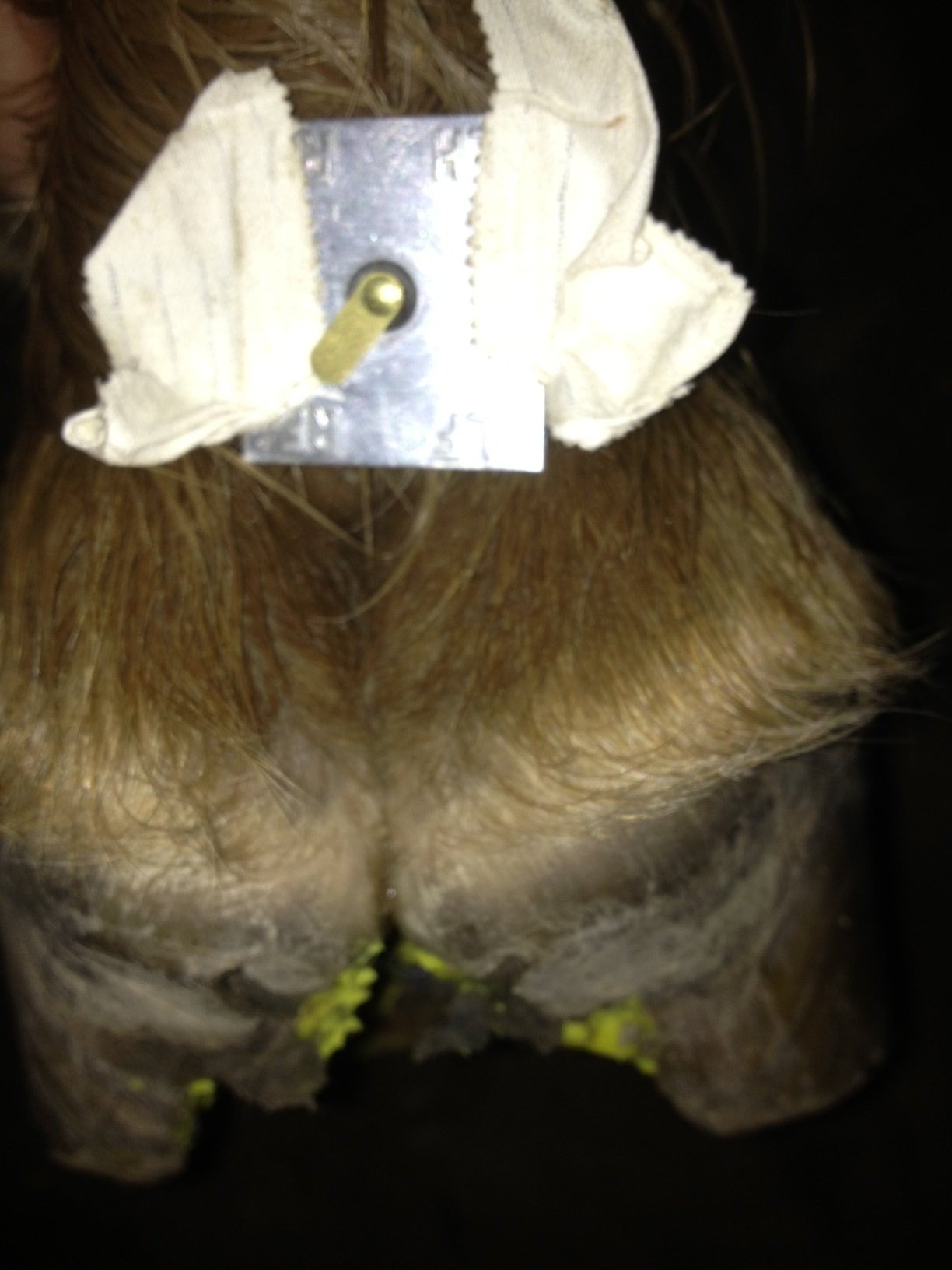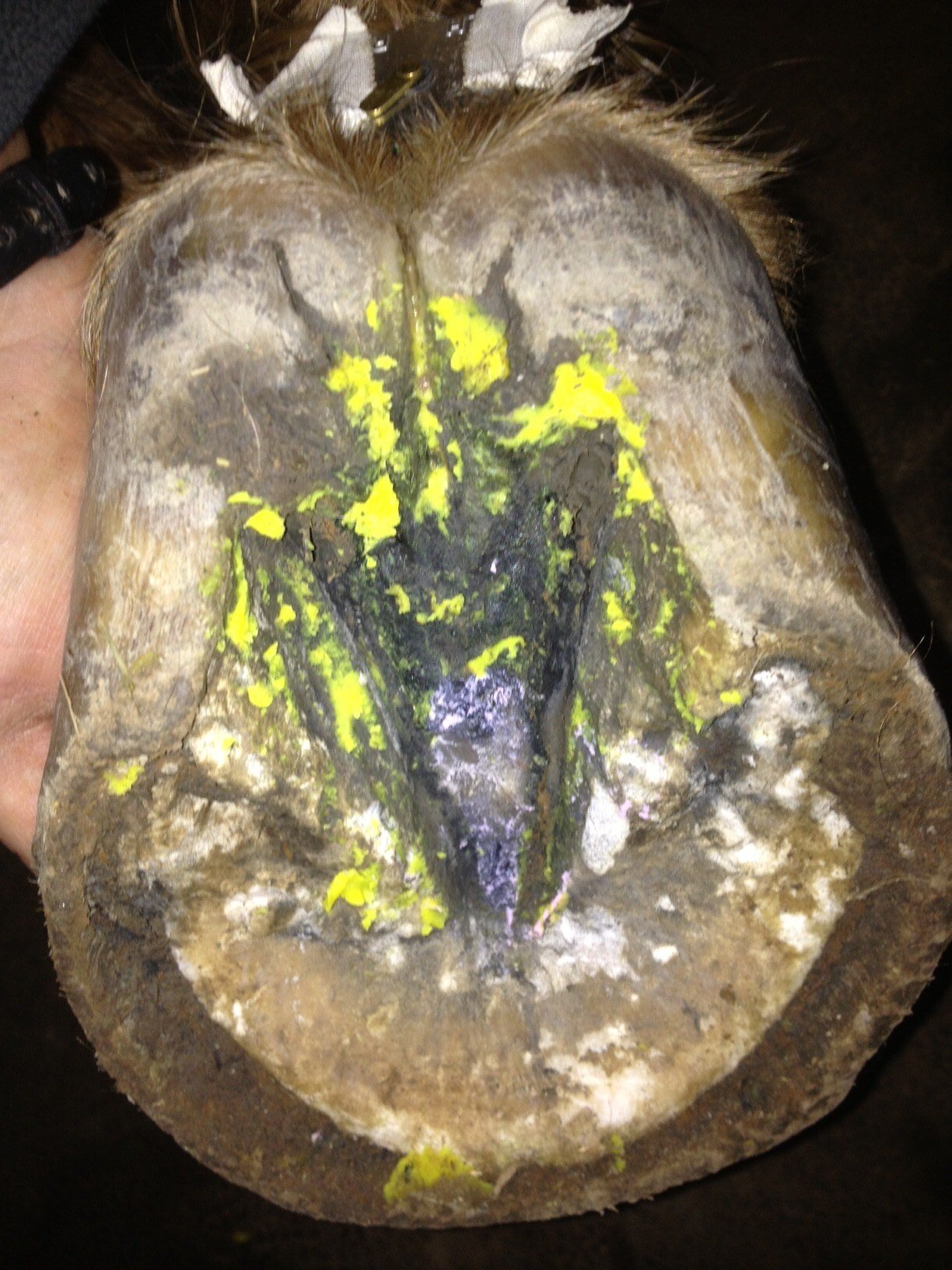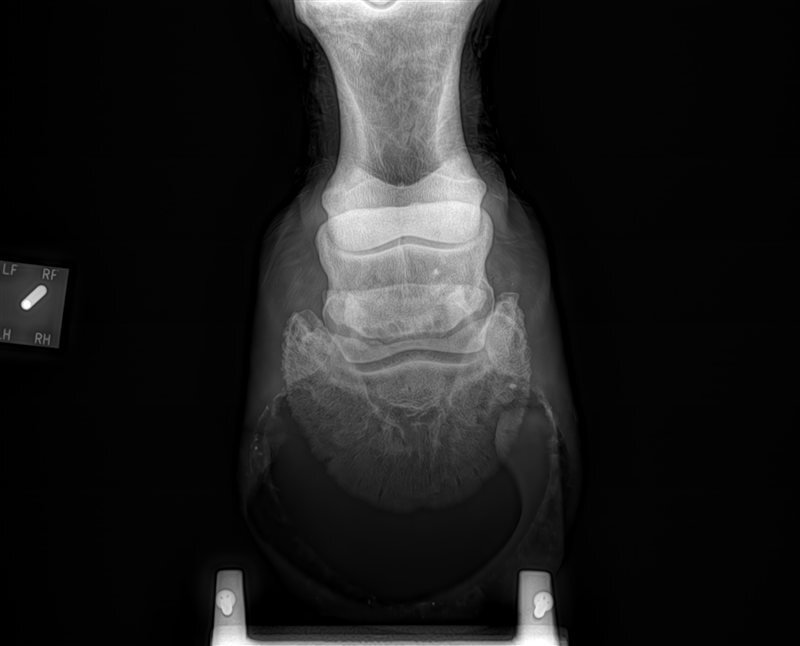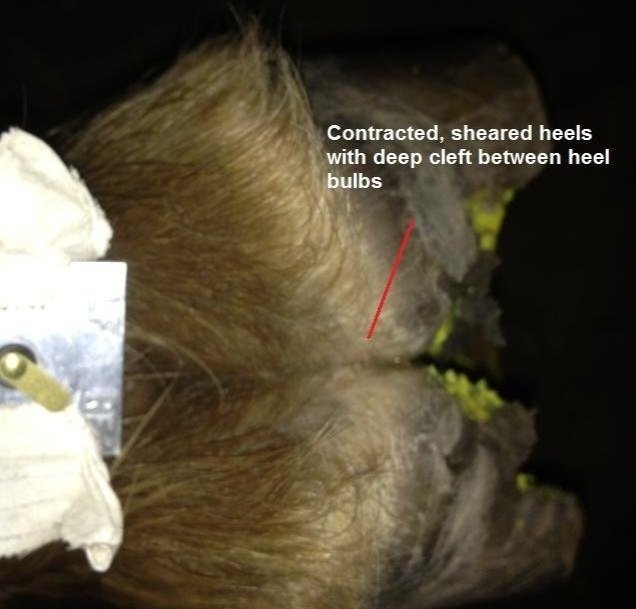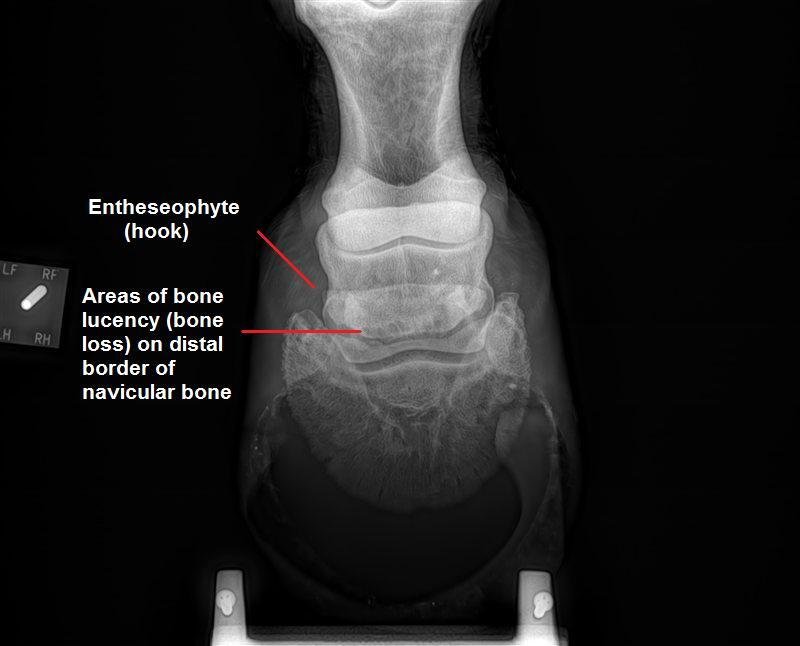N is for Navicular
This case is an 18 year old QH gelding used for trail and pleasure riding. He has always moved a little stiff upfront but is getting more reluctant to move forward off the owner’s leg. Recently she also noticed a really bad smell whenever picking out his feet. On lameness exam, he was very sore to hoof testers and moved very stiffly with both front legs taking short little baby steps and had a mild left front head nod. When a PD nerve block was completed, desensitizing his left front foot, he began to stride out much better with his left leg but switched and became very lame on his right front instead! A PD nerve block on the right front foot had this horse striding out more comfortably, willing to move forward and the head nod was gone.
Radiographs and photos were taken of both his front feet.
What do you think is going on here? What abnormalities do you see in the photos and x-rays? What could explain the bad smell from his feet?
This poor guy has a couple of problems going on. The radiographs of his front feet showed some major changes in his navicular bone consistent with navicular disease or “heel pain” syndrome which causes pain from the navicular bone and surrounding soft tissue tendons and ligaments. Navicular disease is progressive and so likely this gelding had mild changes when he was younger that have gotten worse over time. Unfortunately, since he has been in some degree of low-grade discomfort, he has tried to compensate by loading more on his toe to take the weight off his heel and navicular area. This causes poor circulation in the frog and so it begins to regress, and the heels start to contract. The tight space between the contracted heels makes for a perfect environment for thrush to thrive! They eat away at the tissue between the heels, creating a deep cleft (I could bury a hoof pick between this gelding’s heel bulbs) and sheared heels which are very painful since they are unstable.

